Parque Nakgang Mulgil (낙강물길공원)
10.7Km 2024-11-18
Sanga-dong 423, Andong-si, Gyeongsangbuk-do
Puente Woryeonggyo (월영교)
11.3Km 2024-07-18
Sanga-dong, Andong-si, Gyeongsangbuk-do.
Abierto en 2003, el puente Woryeonggyo (de 387 metros de largo y 3,6 metros de ancho) es el camino pedestre de su tipo en madera más largo de Corea. El puente tiene una leyenda, que habla de una viuda que hizo un par de zapatos de cáñamo a partir de su cabello, mientras sentía la muerte de su esposo. En conmemoración de su pureza y lo noble de su amor, el puente fue designado en el estilo de mituri (cáñamo). En el centro del puente se ubica el pabellón Woryeongjeong.
Pueblo Folclórico de Andong (안동민속촌)
11.3Km 2024-05-09
Seonggok-dong, Andong-si, Gyeongsangbuk-do.
Museo Folclórico de Andong (안동민속박물관)
11.4Km 2022-10-05
Minsokchon-gil 13, Andong-si, Gyeongsangbuk-do.
El Museo Folclórico de Andong es donde se pueden experimentar la cultura confuciana y los juegos tradicionales de Corea. La ciudad de Andong es famosa por la cultura confuciana y las cuatro ceremonias tradicionales (las ceremonias de la juventud, el matrimonio, el funeral y el culto a los antepasados). Aquí, los visitantes pueden ver el estilo de vida de los antiguos coreanos. El museo interior se divide en tres salas de exposición. En la Sala de Exhibición 1, se proyecta un vídeo que explica el nacimiento de un ser humano hasta su infancia. En la 2, el proceso de cómo se llega a ser adulto, hasta su muerte. En la Sala de Exhibición 3, la vida cotidiana y los juegos tradicionales se muestran a través de miniaturas. Incluyendo herramientas de labranza antiguas y el proceso de toma de tela, las reliquias populares de este museo se suman a 3.700 artefactos. También hay un sistema visual de vídeos. Después de ver las exposiciones interiores, la exposición al aire libre es un complejo de parques, con casas rurales tradicionales y bienes culturales. También podrá ver una muestra que representa el estilo de vida de Andong, con casas de piedras con techo de paja y un molino de agua.
Mercado Andong y Mercado Gu de Andong (안동장 / 안동구시장(2, 7일))
11.5Km 2024-01-24
Beonyeong 1-gil 55, Andong-si, Gyeongsangbuk-do
Museo de Contenidos de Cultura Tradicional (전통문화콘텐츠박물관)
11.6Km 2023-07-10
Seodongmun-ro 203, Andong-si, Gyeongsangbuk-do
Calle del Jjimdak del Mercado de Andong (안동시장 찜닭골목)
11.6Km 2024-05-07
Beonyeong-gil 30, Andong-si, Gyeongsangbuk-do
Residencia Tradicional Imcheonggak en Andong (안동 임청각)
12.0Km 2023-02-22
Imcheonggak-gil 63, Andong-si, Gyeongsangbuk-do.
Imcheonggak es una de las casas tradicionales existentes más grandes de Corea, posee una historia de 500 años, y pertenece a la familia Lee de Goseong, en Andong. Es una casa elegante, con el tejado tradicional, que poseía 99 habitaciones, aunque más de la mitad fue derrumbada durante el período de la invasión japonesa. Perteneciendo a una familia de clase alta de la Época Joseon, presenta una amplia variedad de instalaciones anexas, varias subconstrucciones, pabellones, y un hermoso jardín. La casa fue construida por el 6º hijo de un funcionario de importante cargo que correspondía al reinado de Sejong (1418-1450) en la época de Joseon, quien fascinado por la belleza natural de la zona, había decidido instalarse en el lugar. Luego con el tiempo, los hijos de los hijos, han extendido la casa y habían levantado más construcciones anexas, edificaron más instalaciones, pabellones, etc.
Estación de Andong (안동역)
12.0Km 2021-02-04
Gyeongdong-ro 684, Andong-si, Gyeongsangbuk-do.
La Estación de Andong se asienta en la línea ferroviaria Jungang. Abrió el 15 de octubre de 1930 y todos los trenes de pasajeros que actualmente utilizan las líneas de Jungang y Yeongdong se detienen en esta estación. Se instaló una torre de agua en 1940, cuyas 12 caras son únicas, y de allí radica como su designación como Propiedad Cultural Registrada de Corea N° 49. Para aquellos que realicen trasbordo a autobuses interurbanos, la Terminal de Andong se encuentra a unos 6 kilómetros, a la que se puede llegar con los autobuses locales 0, 1, 2 y 11 desde la Estación de Andong.
Festival de la Danza de Máscaras de Andong (안동국제탈춤페스티벌)
12.2Km 2025-08-12
Yuksa-ro 239, Andong-si, Gyeongsangbuk-do.
054-840-3400
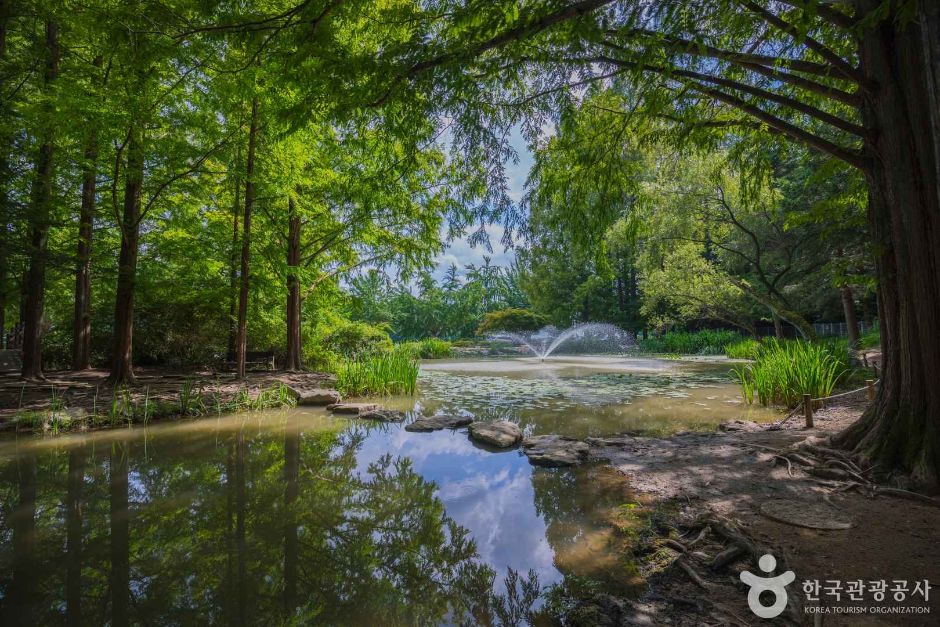

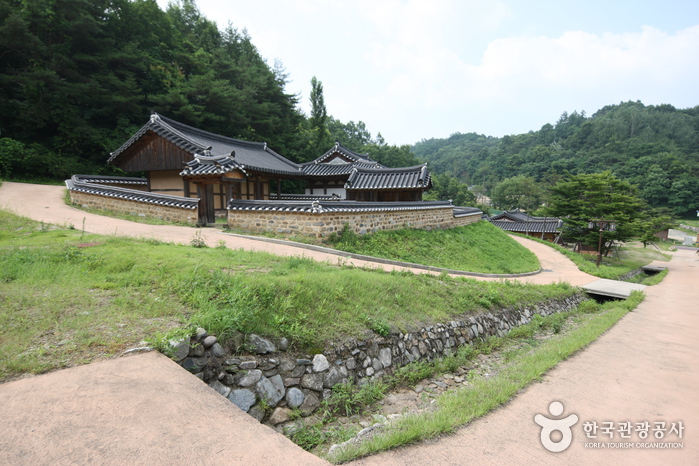
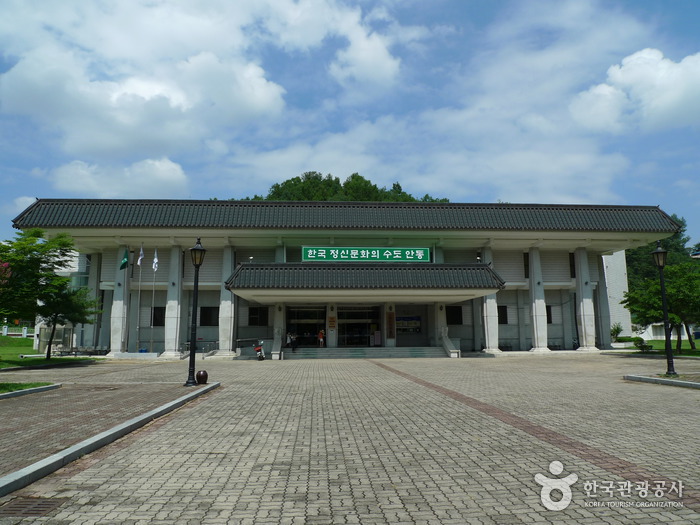
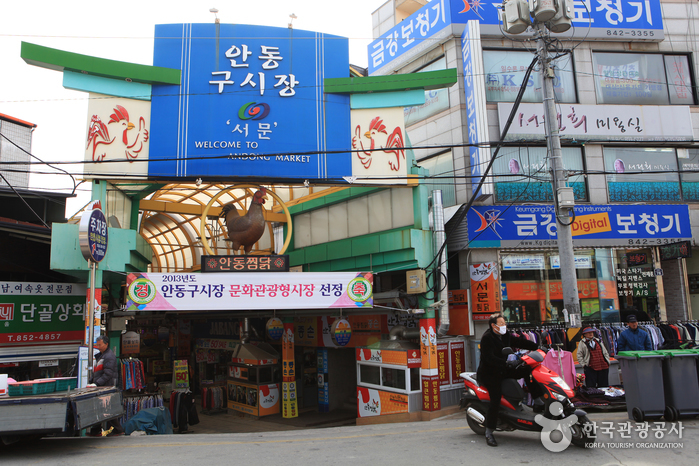
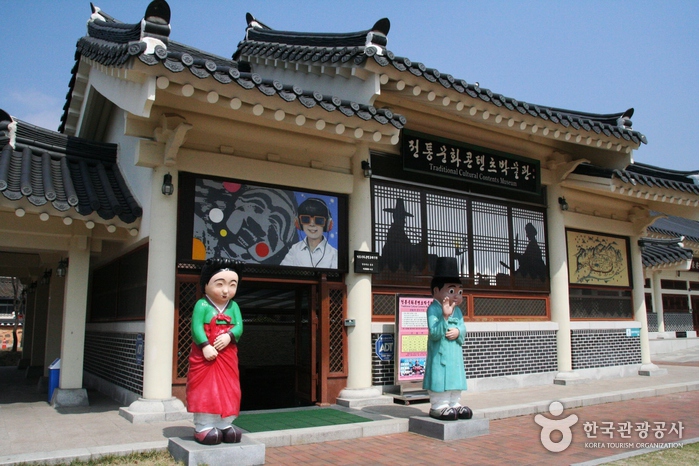
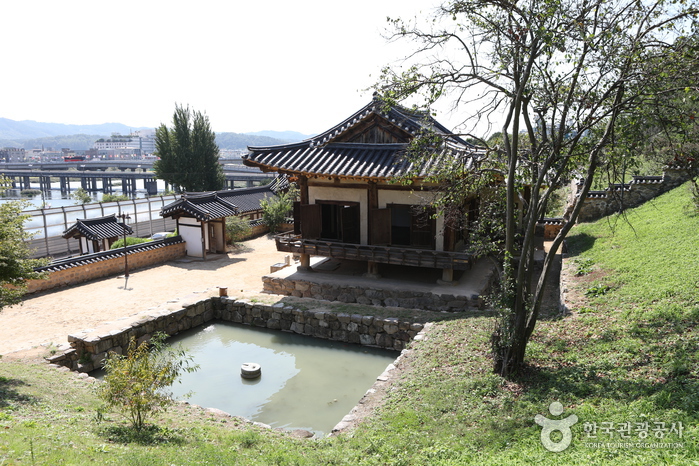
 Español
Español
 한국어
한국어 English
English 日本語
日本語 中文(简体)
中文(简体) Deutsch
Deutsch Français
Français Русский
Русский